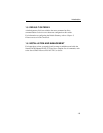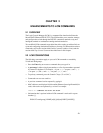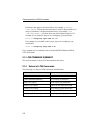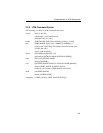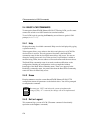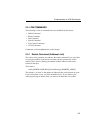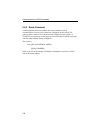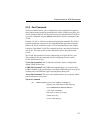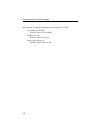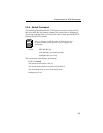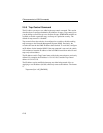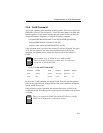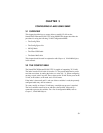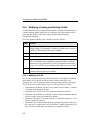
Enhancements to LCM Commands
2-7
2.5.3 Port Command
The Port command allows you to configure the port(s) on the unit in regards to
speed, duplex mode, broadcast storm protection values, GVRP, access ports,
flow
control,
and the default VLAN ID used on each port. If the default VLAN ID for
a port was configured, the port will not automatically become a member of that
VLAN.
Naming a VLAN. A VLAN is not named using the port command. The VLAN
must be created first using the VLAN command and this port made a member.
Refer to the VLAN command to name a VLAN described later in this chapter.
Likewise, if the default VLAN ID is changed, the port is not removed from the
old VLAN. You must use the VLAN command to remove the port from the
VLAN.
The VLAN sub-command is used to configure the port VLAN ID for a port.
Three of the VLAN sub-commands relate to configuring VLANs such as,
VLAN, GVRP, and Access.
VLAN Sub-Command. The VLAN sub-command is used to configure the
default VLAN ID for a port.
GVRP Sub-Command. The GVRP sub-command allows you to specify that
GVRP is enabled on all specified ports. If enabled, GVRP messages are received
on these ports and GVRP messages are propagated to these ports.
Access Sub-Command. The access sub-command allows you to specify which
ports are treated as access ports.
The Port Command
port [PORT-RANGE [speed {auto | 10[Mbps] | 100[Mbps]}]
[duplex [{auto | full[-duplex] | half[-duplex]}]]
[storm THRESHOLD TIME-INTERVAL]
[vlan {name |VLAN-ID}]
[802.3x [flow control] {on | off}]
[GVRP {On | off}]
[access {add | del[ete]}]



